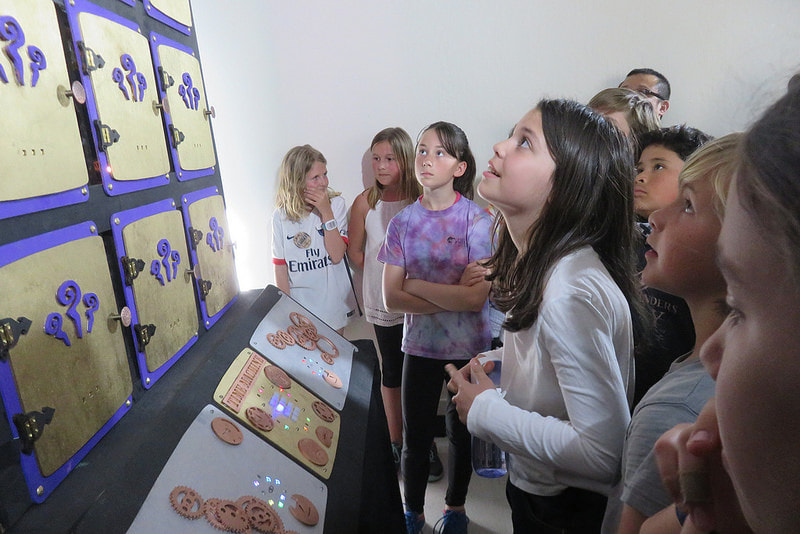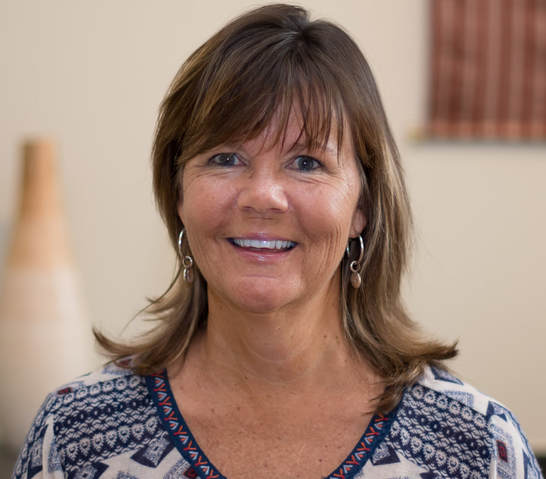 I’ve been teaching, in one capacity or another, for a pretty long time. I’ve taught students who were emotionally or mentally challenged. I’ve taught students who were in “last-ditch-effort” settings before they were sent to prison. I’ve substitute taught while I got my Master’s degree in Counseling. More teaching has occurred in my role as a consultant for Charlotte Danielson. I’ve taught in multiple countries. And I also teach at two online universities and mentor students getting their master’s and doctorate degrees. One truth I hold close to my heart is that every single time I teach, I am as much the learner as I am the teacher or facilitator. The learning from participants with whom I work prompts me to learn more---read more books, watch more teachers teach, take more classes, and always and forever remain a LEARNER. Yesterday, after teaching, I had the distinct pleasure of having a superintendent (and now a dear friend) take me around the Dawson area in the Yukon Territory. I saw Jack London’s cabin; learned about dredging and mining for gold; I asked so many questions, I feared Bill would throw me off the top of the Dome where we overlooked the Yukon and Klondike rivers. With this learner mentality in mind, I would like to share some pieces of an article Charlotte Danielson wrote about how to promote teacher learning, whether your school or district is using the Danielson Framework for Teaching or not. Charlotte’s words are in color, which is appropriate because she writes so eloquently, they deserve to be in living color. The need for ongoing teacher learning is well-recognized in the professional community. Teaching is, simply stated, such complex work that the skills cannot be adequately addressed in a teacher preparation program, regardless of its quality. As Lee Shulman has memorably noted: “After 30 years of doing such work, I have concluded that classroom teaching – particularly at the elementary level – is perhaps the most complex, most challenging, and most demanding, subtle, nuanced, and frightening activity that our species has ever invented.” p.504. Most teachers would concur. Furthermore, not only is teaching extraordinarily complex work; it is essential work. Our nation depends, for its future well-being, on an educated citizenry and a well-prepared workforce. So in addition to the educational imperative to enable each student to reach his or her greatest potential, there is a larger societal demand as well. It’s essential that schools graduate students who will be able to inherit a complex world. It is also well-recognized that of all the various factors that contribute to student learning, the most important one under the control of the school is the quality of teaching. There are others, to be sure: the quality of the curriculum and instructional materials, the master schedule, the level of learning support for those students requiring extra help. But the bottom line, after many studies on the subject, is that the quality of instruction is the single most important factor within the school’s control in promoting student learning. Therefore, given the importance of good teaching, and its complexity, it would require breath-taking audacity to suggest that the tasks of teaching can be mastered by the time teachers enter the profession. Indeed, learning to teach is a career-long endeavor; the most experienced teachers acknowledge – frequently with pride – that they are still perfecting their craft. While there is professional consensus on the need for ongoing professional learning by teachers, such learning cannot occur in a vacuum. That is, in order to create the conditions for improved teaching, one must first define it. Without such a definition of good practice, educators are, in effect, wandering in a swamp. Many schools and districts (and some entire states and a few countries) have adopted the framework for teaching (2007) as their definition of good teaching. The framework is a research-based set of components of instruction, aligned to the INTASC principles, and grounded in a constructivist view of learning and teaching. While the framework is not the only definition of good teaching that could be used to structure professional learning, it has been an important part of the educational “scene” since it was first published in 1996, and it is widely accepted by teachers as capturing the essential components of their practice. Furthermore, because it includes levels of performance which describe a continuum of teaching from novice to expert, it can help guide ongoing learning. Any definition of teaching rests on certain assumptions; those of the framework for teaching concern the active nature of student learning and the consequent need for teachers to be able to offer lessons that enlist students’ natural curiosity and drive for learning. Furthermore, the framework of teaching rests on the concept of teaching, in addition to being challenging emotional and even physical work, is intense intellectual work. That is, teachers make, literally, hundreds of decisions each day; teaching is a thinking person’s profession. Thus, if one accepts that teaching is, among other things, cognitive work, then the conversations about teaching, the manner in which teaching is supported and promoted, must be about the cognition. Educators have consolidated their understanding of the principles of teacher learning over the past several decades. While it was believed at one time, even after the need for ongoing learning was recognized, that workshops and courses would fill the bill, the limitations of such approaches are now well-known. Derisively referred to as “sit ‘n git” sessions, stand-alone workshops and courses have been demonstrated to have little impact on teacher practice. Far better results have been achieved through job-embedded approaches, those that incorporate professional learning activities into the daily work of teachers. But it is not only the immediate relevance of job-embedded approaches that accounts for their effectiveness; that effectiveness is also a consequence of how the activities are structured and carried out. Now that the principles of professional learning are better understood, they may be applied to the variety of setting in which such learning occurs. Simply put, teacher learning is learning, and the principles of all learning can be applied to it. Granted, there are some important differences between the manner in which adults and children learn, primarily relating to the greater experience on which adults can draw. But the mechanisms of learning are the same, and may be boiled down to a single sentence: learning is done by the learner through an active intellectual process. That is, learning is not something done by one person to another, which is why the term “professional learning “ is preferable to “professional development;” the latter suggests, somehow, that the development of teachers is something that can be arranged by others. To quote Lee Shulman again, “..in the lives of teachers, authentic and enduring learning occurs when the teacher is an active agent in the process – not passive, nor an audience, not a client or a collector. Teacher learning becomes more active through experimentation and inquiry, as well as through writing, dialogue and questioning. Thus the school settings in which teachers work must provide them with the opportunities and support for becoming active investigators of their own teaching.” (ibid, pp 513-514.) In specific terms, then, what are the features of activities for teachers that create an environment of active engagement? What should be designed into processes intended to promote teacher learning? There are only three, and they may be incorporated into multiple professional activities. Self-assessment It is a well-known principle of learning that self-assessment against clear criteria and standards promotes learning. This is the concept behind teaching students to review their own writing, for example, against a rubric with the aim of identifying aspects that could be strengthened. In order to do this successfully, students must step outside the actual act of writing, and examine their own writing in a dispassionate light. This activity requires metacognition and the analysis of their writing as distinct from producing it. The same mechanism is at work when teachers analyze their teaching. They are required to consider evidence of practice, and compare this evidence against the performance standards, as reflected in the framework for teaching and the accompanying levels of performance. Such self-assessment requires stepping outside the experience of teaching itself, and a dispassionate analysis of practice. Reflection on practice Reflection on practice is a natural activity; whenever we find ourselves replaying “the tape” of an event, we are, in effect reflecting on that activity. In fact, as John Dewey pointed out over 100 years ago, we learn not through our actions per se, but through our thinking about those actions. In other words, it’s not the activity itself that yields learning; it’s the teacher’s thinking about the activity that does so. However, while reflection is a natural human activity, not everyone does it well. High-quality reflection, in other words, is a learned skill. Some programs of professional practice incorporate an emphasis on reflection as part of their approach. Graduates of those programs will probably have acquired a high level of skill in reflection. But many other teachers, if they encounter it at all, encounter their first experience with reflection as part of a mentoring program. If it’s well designed, new teachers will be asked to reflect on their own teaching in light of the standards of practice, and to suggest ways in which that teaching could be improved. Once they have acquired that skill, then, it is available for use throughout their careers. The English language is replete with expressions that illustrate the close connection between thinking and speech. “I’m thinking out loud” means that I’m talking something through, and that process of talking helps me clarify my thoughts. Or, “How do I know what I think until I hear myself say it?” refers, in an amusing manner, to the role of speech in bringing thoughts to life. Educators who have used the framework for teaching in their schools, for many different purposes, are frequently surprised (and delighted) to discover that the quality of their professional dialogue has been vastly increased. Indeed, many of them report that “it’s all about the conversation.” When the stated purpose of an observation, for example, is teacher evaluation, this is an astonishing finding; it emphasizes the power of conversation around clear standards of practice to shape professional interaction, and to promote learning. The most productive learning occurs when educators incorporate into their practices those elements widely accepted as promoting professional learning, namely self-assessment, reflection on practice, and professional conversation. The framework, due to its level of detail, and particularly the levels of performance, make it particularly suited to such applications. Danielson, Charlotte. Enhancing Professional Practice: a framework for teaching. Alexandria, VA, ASCD, 2007. Shulman, Lee S. The Wisdom of Practice: Essays on Teaching, Learning, and Learning to Teach. San Francisco, Jossey-Bass, 2004. Sorry, now it is back to me and my own thoughts. As you can likely see for yourself, Charlotte says it all. What I love are the specific examples of learning about the learning. For instance, one school leader told me, “I have always believed that teachers need to continue to grow in their practice, but now I see that I need to be the model for that. Every time we get together for professional learning, I should be modeling professional learning the way teachers should be teaching---with the learner in the center of the equation.” Happy Communicating to all!! Shelly
0 Comments
Leave a Reply. |
Shelly ArnesonCategories |


 RSS Feed
RSS Feed